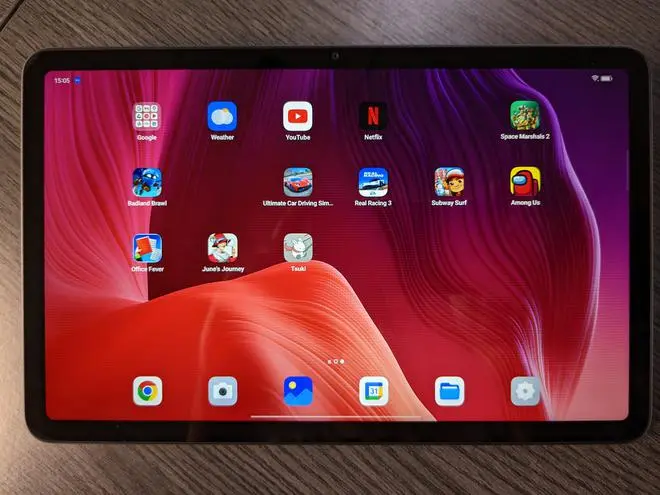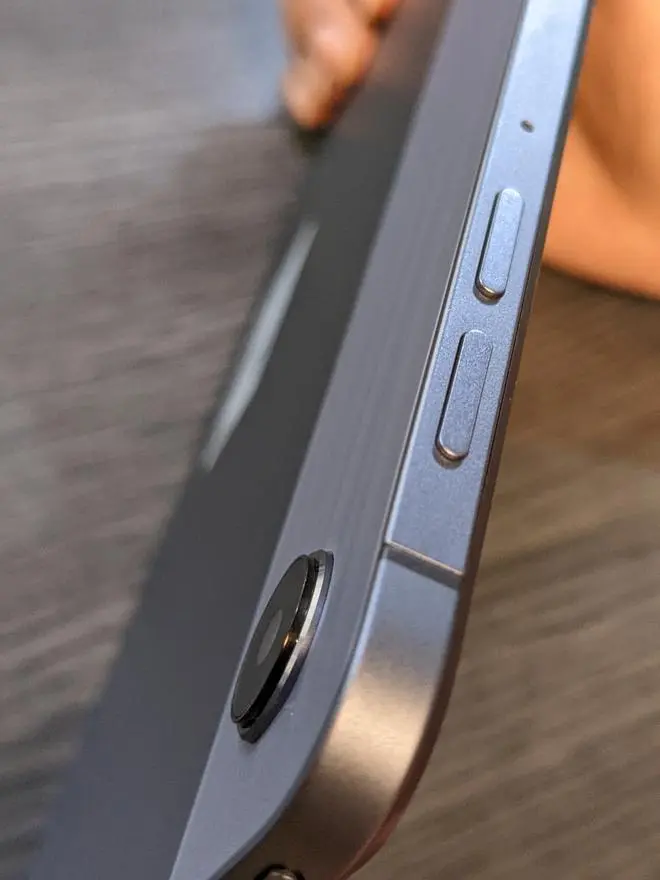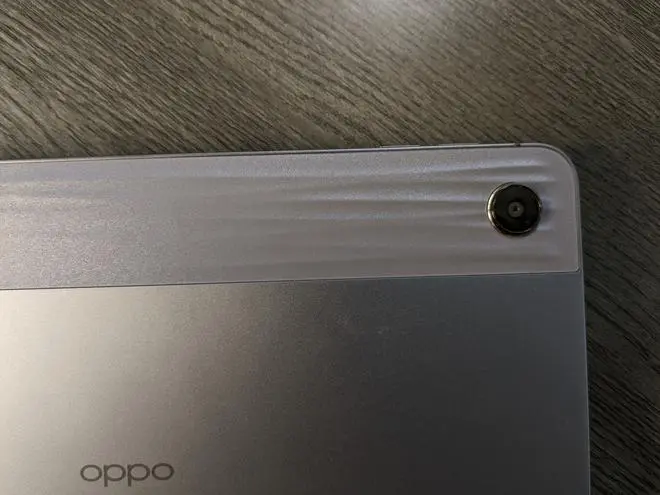Unless you’re a monk practising some serious detachment up in the Himalayas, chances are you’re constantly craving the next hit of digital dopamine.
Be it the hottest new soundtracks, the most trending show on Netflix or just trying to meet your reading goals for the month — we are all constantly consuming content. And what better device to do that on, if not an easy-to-use, affordable tablet?
Build and design

The OPPO Pad Air offers a 10.36-inch 2K IPS screen
At just about 440 grams, the first-ever tablet by OPPO — the Pad Air — is fairly lightweight. The form factor is pretty thin at just a little less than 7 mm, and I found it easy to hold and carry around.
Despite its slim form factor, the OPPO Pad Air offers a 10.36-inch 2K IPS screen, and in my books, this is pretty much the ideal size for a secondary media consumption device. The top of the back panel features the ‘Sunset Dune 3D Texture’ — a smooth, undulating surface that adds some uniqueness to the grey-all-over tablet.
There are three physical buttons — the power button on the left bezel, and the volume rockers on top. Around a smooth corner from each other, they’re fairly easy to access when you need to. Along the top bezel is also the microSD card slot, where you can amp up the storage by another 512 GB.

There are three physical buttons — the power button on the left bezel, and the volume rockers on top
I caught up on some new releases — Rocketry: The Nambi Effect and binge-watched a couple of seasons of The Crown on the OPPO Pad Air, and the viewing experience is pretty immersive. I found the need to amp up the brightness almost to maximum levels while watching shows or movies, given the fact that the brightness levels on the Pad Air are 360 nits. With 225 ppi, the visuals were sharp enough on the LCD.
Catching up on my read of the month — Verity by Colleen Hoover — was easy-peasy on the big screen. I liked using the option to switch to a black-and-white display, especially while reading.
While playing Real Racing 3, the graphics rendered smoothly most of the time and there were minimal stutters. The IPS LCD screen offers pretty decent viewing angles in case you and a buddy want to Netflix and chill.
The quad speakers, surprisingly are one of the highlights of the device offering audio quality that is loud enough for a couple of people to enjoy music or movies together. Powered by Dolby Atmos, the audio quality was so clear and engaging that most of the time I preferred not using my earbuds — a pleasant change for once.
The Pad Air has an 8 MP rear camera and a 5 MP front camera. The images on the back camera are basic, with a fair bit of grain. The front camera, when I used it for online meetings, does its job decently and also comes with Retouch mode turned on by default, which might appeal to most users.

The Pad Air has an 8 MP rear camera and a 5 MP front camera
ColorOS
The proprietary Operating System that OPPO has used on all its smartphones is built into the Pad Air as well. The OS thankfully doesn’t have any excessive overlays or animation and keeps things simple appearance-wise. It supports multitasking quite a bit — you can choose to have certain apps as a floating window in one corner.
When I needed to refer to two apps simultaneously, for example, attending a meeting on Google Duo while accessing documents on Google Drive, the split-screen mode definitely came in handy. The tablet ships with a Snapdragon 680 8-Core 6nm processor with 4 GB RAM, which the company says can be extended to another 3 GB if needed, allowing for a total performance of 7 GB RAM.
Browsing and multitasking didn’t really slow down when I had lots of apps open and was switching from one to another often. 64 GB of internal storage, in the unit I reviewed, is sufficient for storing tons of e-books, photographs, and documents. But in case you need more, there’s always the variant that offers 128 GB internal storage.
With a 7,100mAh battery packed in, the device had me gaming for way longer than is healthy, at least on a weekday. There’s an 18W Fast Charger and it took just around two hours to get to full charge from zero. Initially with some light usage — about 1-2 hours of watching videos each day — I was looking to plug it in only once every two-three days or so, and it definitely was a relief not having to make sure it’s charged at the end of each day. However, on the days that I played games on it a bit obsessively, I had to plug it in after about six-seven hours of usage.
The OPPO Pad Air is priced at ₹16,999 for the 4 GB+64GB version and ₹19,999 for the 4GB+128GB version. The OPPO Pad Air gets a lot of things right when it comes to what one might look for in a relatively affordable tablet primarily for media consumption — it’s easy to carry along wherever you go, doesn’t skimp on-screen real estate, offers a pretty engaging viewing and listening experience, and packs in enough power to entertain you for a good chunk of the day.






Comments
Comments have to be in English, and in full sentences. They cannot be abusive or personal. Please abide by our community guidelines for posting your comments.
We have migrated to a new commenting platform. If you are already a registered user of TheHindu Businessline and logged in, you may continue to engage with our articles. If you do not have an account please register and login to post comments. Users can access their older comments by logging into their accounts on Vuukle.